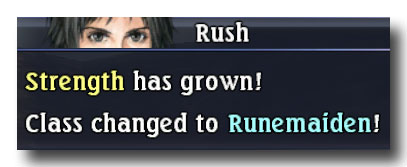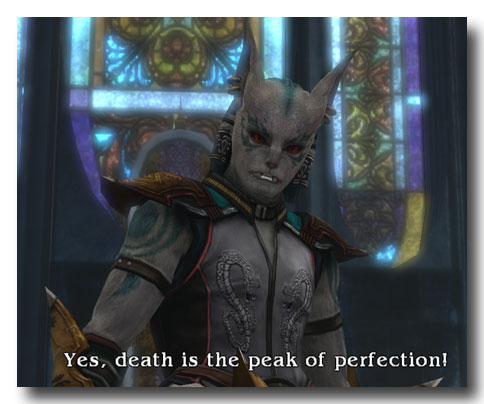The Last Remnant‘s developers seem to think they understand perfectly why RPGs are popular and so they’ve accentuated those elements for their game. The problem is they got it so very wrong.
The Last Remnant is a JRPG for those who believe RPGs should be primarily about levelling up, collecting and crafting. This game has those in staggering amounts.
If levelling up one character is satisfying, the developers must have extrapolated levelling up over a dozen characters at a time would be a thrilling experience. Thus, post-battle, the player can expect multiple dings for multiple characters but, like much of the game, these improvements can be indecipherable.
When Emma proclaims her Love has grown after a battle, you can just look bemused. When Torgal switches classes in quick succession, going from Ranger to Swashbuckler to Mystic Knight, you can only shake your head. When Rush somehow manages to change his class to Runemaiden, you can only wonder about his proclivities when he isn’t running around screaming, “Irina!”

Instead of displaying character levels, the game tracks individual character growth obliquely through skill and attribute improvements. A Battle Rank represents the overall union strength but as indicators go, it is meaningless since there is no way of making direct comparisons with foes before battles begin.
Inventory management, collecting and crafting in The Last Remnant is a mixed bag, displaying progressive thinking and muddled execution. The player need not equip individual characters, which avoids nightmarish inventory management scenarios given the maximum party size of 50. Party members will instead request weapons, items and materials from loot drops — a novel approach.
Party members will also request materials — ore, vegetation, metals, minerals and monster viscera — to upgrade items as they grow in strength.

Fulfilling these requests will be far from easy since you will be told what components are needed but not where to obtain them. The game expects you to run around vast areas looking for dig spots and monster encounters to get a random chance of finding what you need.
To aid the player in the onerous task of collecting components, the game includes a Pokémon reject creatively named Mr. Diggs. If these excavation sequences involved actual gameplay, this could have been a welcome diversion from the running and killing that constitutes the bulk of the game experience. But no, simply find a dig spot, press A and patiently wait for the artists to stop their self-indulgent animation exhibition. Mr. Diggs will level up — yet another ding — becoming increasingly efficient at finding materials yet there will be no satisfaction since it involved no skill or thought to accomplish. It’s yet another example of Square Enix’s zeal to add more without evaluating if it added anything meaningful to the game.
“Are you even trying?!”
If The Last Remnant enjoys excess in superficialities, it suffers a paucity where it really matters. This is not a game for those who believe RPGs should be about deep stories and well-crafted characters.
Utmost care is spent designing every ridiculously ornate bit on a character’s outfit yet the writers will have nothing interesting for the character to say. The characters are meant to be mere props in one spectacular cutscene after another so they are depicted with such broad strokes they are almost freely interchangeable with the cast of previous Square Enix JRPGs. The Last Remnant’s Irina could be replaced with Penelope from Final Fantasy XII without much rewriting.
The writing is at best forgettable and at its worst so painful you feel desperately sorry for the voice actors. No amount of remuneration could possibly be worth spouting those lines.

The storyline is typical Square Enix fluff: a bildungsroman with conspiracies, mysteries, rebellion against the status quo and the powers that be. In the hands of a developer determined to craft a meaningful story filled with characters you want to root for and see succeed, The Last Remnant might have had something insightful to say about human nature, family, independence, tradition, religion and the seductiveness of power. But no, this is by Square Enix so there will be more style than substance.
Beautiful on the outside, soulless beneath the surface. This is a game from a company which has completely forgotten about The Spirits Within.
